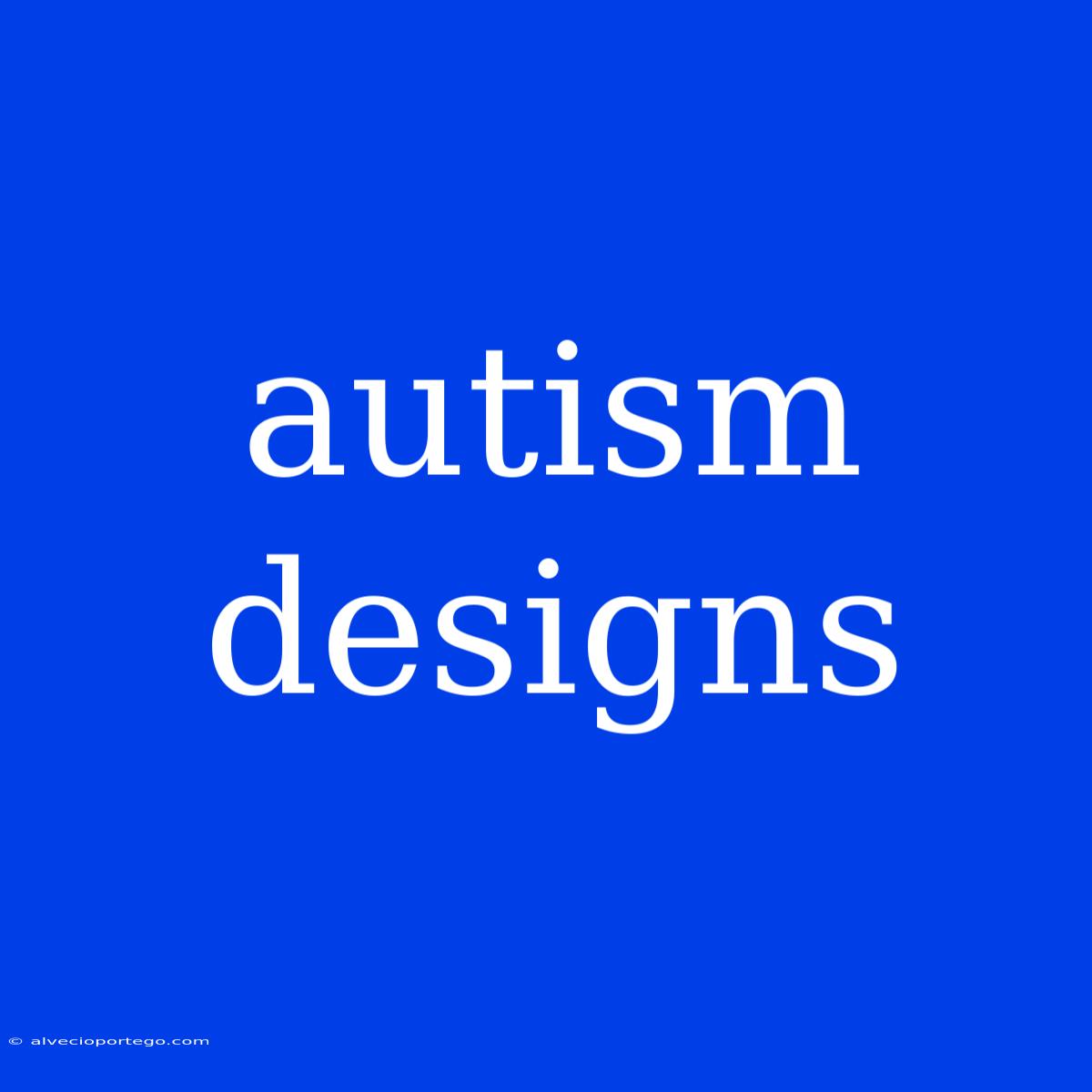Autism Designs: Creating Inclusive Spaces and Experiences
Autism is a neurodevelopmental disorder that affects communication and social interaction. Individuals with autism may experience sensory sensitivities, anxiety, and challenges with change. Design, in its many forms, plays a crucial role in creating environments that are welcoming, supportive, and accessible for autistic individuals.
Here's how design can be tailored to cater to the unique needs of autistic individuals:
1. Sensory Considerations:
- Reducing Sensory Overload: Autistic individuals can experience sensory overload from overwhelming sights, sounds, and textures.
- Design Solutions: Use calming color palettes, soft textures, and muted lighting. Implement sound-absorbing materials and minimize visual clutter.
- Providing Sensory Stimulation: Sensory input can be beneficial for regulation and engagement.
- Design Solutions: Incorporate sensory play areas with fidget toys, textured surfaces, or sensory paths. Offer quiet spaces with calming visuals or sound machines.
2. Creating Predictability and Routine:
- Reducing Anxiety: Autistic individuals often thrive on routines and predictable environments.
- Design Solutions: Use clear visual cues like pictograms, schedules, and labelled spaces. Employ consistent layout and furniture arrangement to minimize confusion.
3. Fostering Communication and Understanding:
- Visual Communication: Visuals can be powerful tools for understanding and communication.
- Design Solutions: Utilize visual aids, such as social stories, picture exchange systems (PECS), or visual timers. Incorporate graphic design in instruction manuals, forms, or websites for clear communication.
4. Promoting Inclusion and Accessibility:
- Universal Design: Designing spaces and experiences that benefit everyone, including those with disabilities.
- Design Solutions: Ensure accessibility features like ramps, wide doorways, and designated parking spots. Consider alternative communication methods and accessible technology.
- Creating Inclusive Spaces: Public spaces and workplaces should be welcoming to autistic individuals.
- Design Solutions: Offer sensory-friendly options like quiet rooms, fidget toys, and designated seating areas. Promote awareness and understanding about autism through signage, educational materials, or events.
5. The Importance of Collaboration:
- Listen to the Autistic Community: The most valuable insights come from the lived experiences of autistic individuals.
- Design Solutions: Collaborate with autistic designers, artists, and advocates. Conduct focus groups and surveys to gather input on design preferences.
Examples of Autism Designs:
- Sensory-Friendly Playgrounds: Designed with inclusive elements like calming areas, sensory paths, and tactile play structures.
- Autism-Friendly Museums: Offer quieter hours, sensory kits, and social stories to prepare visitors for the experience.
- Inclusive Workplaces: Implement policies and practices that support autistic employees, such as flexible schedules, visual supports, and quiet workspaces.
- Autism-Specific Design Products: Fidget toys, weighted blankets, and noise-canceling headphones cater to sensory needs and provide comfort.
By incorporating these design principles, we can create environments that are not only accessible but also celebrate the unique strengths and perspectives of autistic individuals. Autism design is a powerful tool for fostering inclusion, promoting understanding, and building a more equitable world for everyone.

